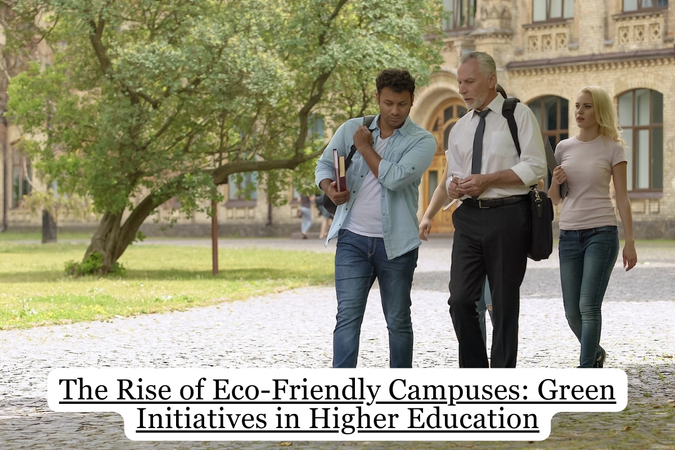

Higher education institutions worldwide establish vast efforts toward establishing sustainable environmental campuses. They have progressed beyond basic sustainability practices that included installing recycling bins along with turning off lights.
Now the efforts focus on sustaining long-term solutions which change campus operations while decreasing environmental effects by involving students in environmental responsibility practices. Academic institutions together with their communities understand the importance of environmental protection thus eco-friendly campuses continue to emerge.
Modern universities face increasing pressure to address climate change and resource depletion. Multiple higher education institutions have transformed sustainability into fundamental institutional values. They’re designing buildings with energy efficiency in mind, creating composting systems, and launching climate action plans.
It leads to positive outcomes for both environmental protection and student development of lasting conservation practices along with social conscientiousness. Sustainability on college campuses also shapes the reputation of a university. Students tend to go green college which demonstrates genuine environmental care. Green initiatives improve community health, reduce costs over time, and create a more inspiring place to live and study.
Sustainability in higher education isn’t just about buildings and solar panels. It’s also about supporting students who juggle academics with activism. Many eco-conscious students are also under pressure to succeed academically and may seek additional support. In fact, services that let you pay someone to do homework have gained popularity among college students. These platforms connect learners with professional writers, offering online help for essays, reports, and other assignments. This gives students more time to focus on organizing events or joining green initiatives on campus.
Campuses across the nation apply sustainability through a multiple-tiered method. The following list represents various strategies which colleges around the country have already implemented:
The sustainability concepts developed for college campuses enable students to join daily efforts towards environmentally friendly practices. When students select plant-based food options and turn off their dorm lights they support the main sustainability targets.
Below is a table showing the most common green practices adopted at U.S. colleges and their impact.
| Green Practice | % of Campuses Using It | Reported Benefit |
| Recycling Programs | 95 | Reduces landfill waste |
| LEED-Certified Buildings | 60 | Cuts energy costs by up to 30% |
| Solar Power Installations | 40 | Lowers campus emissions significantly |
| Sustainable Food Sourcing | 55 | Supports local farms, reduces carbon |
| Bike Infrastructure | 70 | Decreases student car use |
This data shows that sustainability on campus isn’t rare anymore. Colleges are adopting green strategies in large numbers—and seeing real results.
How to Go Green in College Life
Students don’t need to wait for big institutional changes. Small personal steps can have a major impact:
Each student can become a role model by choosing sustainability in daily decisions. The more students get involved, the faster their campuses shift toward eco-friendly norms.
The move toward sustainability in higher education signals hope. Universities stand as major forces in establishing a sustainable future because climate issues continue to grow rapidly. Eco-friendly campuses are not only about saving energy or reducing waste.
They’re about creating environments where future leaders learn how to care for their world. Campus sustainability advancement demonstrates that change happens today and is a reality. Going green in college becomes achievable through collective participation from students and faculty members as well as staff personnel. It’s the new standard.

Don't let aphids, slugs, and caterpillars ruin another plant. Take back control with simple, natural methods that actually work.